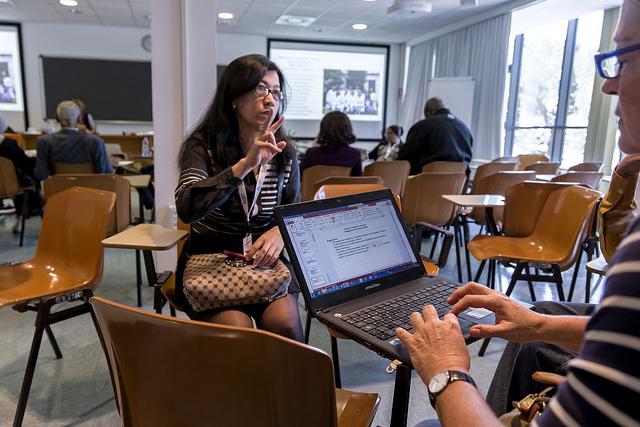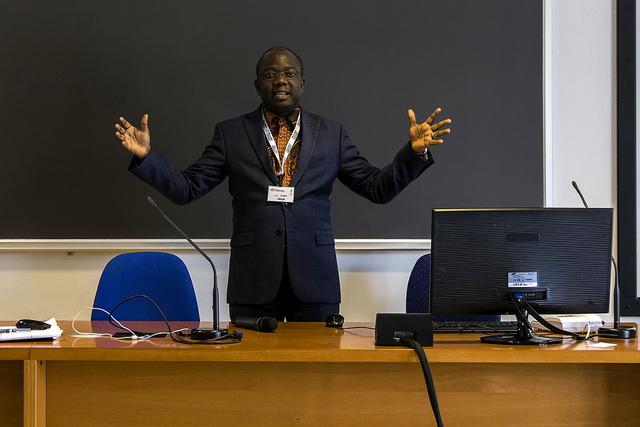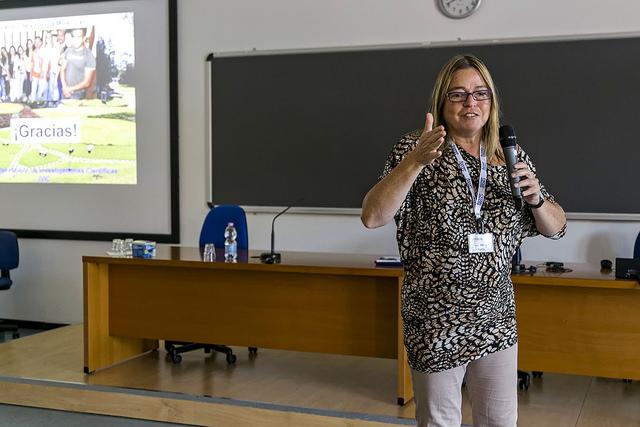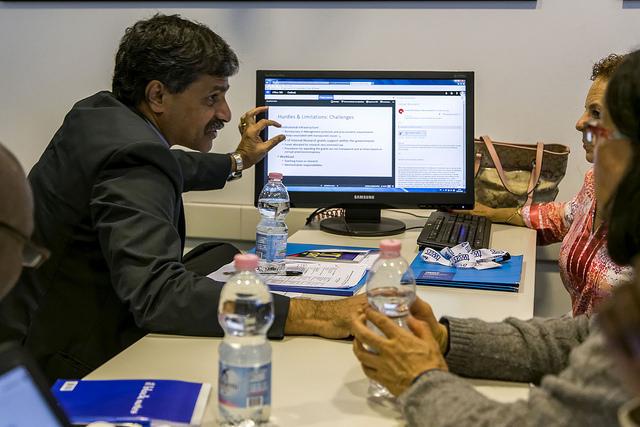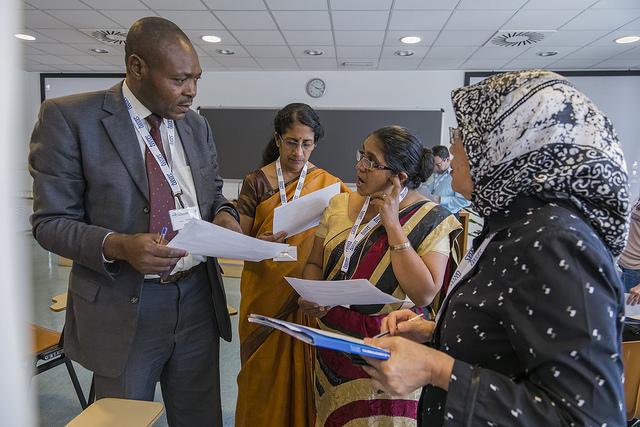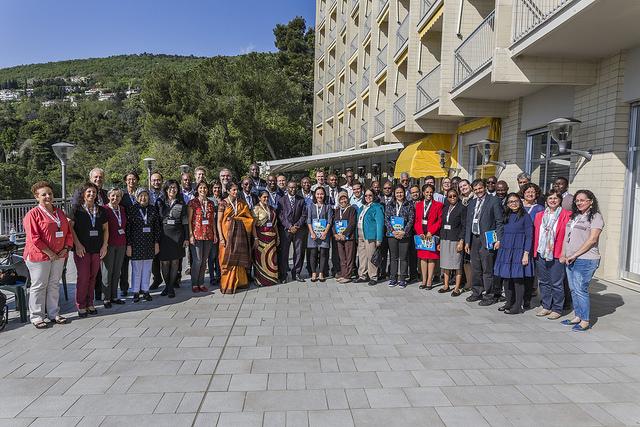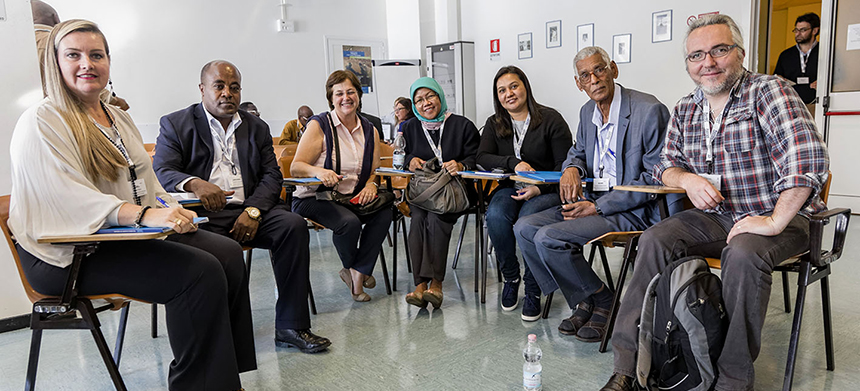
About 19 years ago, physicist Denise Zezell of Brazil received a grant from TWAS to pay for some simple equipment that measures the energy from lasers. The device was the first of its kind in her laboratory, but in time, it started a chain of events that nobody initially expected.
The School of Dentistry at the University of Sao Paulo became interested. They and physicists at Brazil’s Nuclear and Energy Research Institute began to collaborate on research exploring how lasers could be useful to dentists. As the field grew, more funding for the field began to pour in. “We began to offer classes for clinicians,” Zezell said. “From those students, a research line for lasers in dentistry grew.”
Zezell was one of over 40 outstanding scientists from developing countries who came to Trieste from 18-22 April for an event on TWAS grants called "TWAS Research Grants Conference - Shaping Careers in Science". All of them were past recipients of a TWAS research grant, which are awarded to scientists in developing countries for the purchase of indispensable lab equipment and supplies.
The grant amounts may be small, ranging from just a few thousand dollars when the programme began in 1986 to up to $30,000 today. But they help early-career scientists in resource-scarce countries establish laboratories that go on to conduct important research, attract more funding, and train more scientists. This makes a difference in developing countries by boosting careers and even creating economic growth.
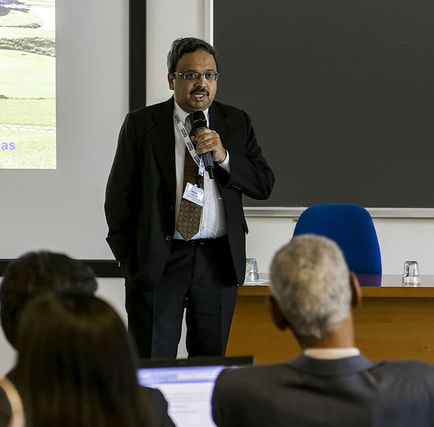 Brazil's industry in low-intensity lasers for dentistry are just one instance of the effectiveness of TWAS research grants. Research on the lasers, which can for example excite tissues in gums and teeth so that they heal more quickly after surgery, set in motion a swell in expertise that created a demand for laser equipment in Brazil. The materials industry responded by beginning to build their own lasers. And now, Brazil is one of the global leaders in the field, with about 100 researchers working on how lasers can be useful to dentists and at least 10 companies manufacturing medical and dental lasers.
Brazil's industry in low-intensity lasers for dentistry are just one instance of the effectiveness of TWAS research grants. Research on the lasers, which can for example excite tissues in gums and teeth so that they heal more quickly after surgery, set in motion a swell in expertise that created a demand for laser equipment in Brazil. The materials industry responded by beginning to build their own lasers. And now, Brazil is one of the global leaders in the field, with about 100 researchers working on how lasers can be useful to dentists and at least 10 companies manufacturing medical and dental lasers.
Since the programme's start, TWAS has awarded more than 2100 grants totaling USD 16.6 million. Funding provided by the Swedish International Development Cooperation Agency (Sida) became the core of the programme in 1991. A separate grant programme, funded by COMSTECH and TWAS, is open to young scientists from member countries of the Organization of Islamic Cooperation (OIC).
Scientists at the conference came from 26 nations in the global South – including Sudan, Mali, Senegal, Nigeria, Chile, Argentina, Sri Lanka, Uzbekistan and Nepal – spanning fields ranging from biology to mathematics. They discussed their career challenges and the role the TWAS grant played in shaping their professional lives, enabling their discoveries and building new collaborations. Women accounted for 52% of the conference participants.
Participant Balakrishna Pisupati began his career over 25 years ago as a geneticist with an interest in biodiversity, particularly in agricultural biodiversity to help crops handle high levels of salt in the environment. He returned to India from the United Kingdom, suspending his work at Cambridge for a job in India developing a research facility for an NGO. Then everything changed.
Pisupati was successful in starting the facility after receiving a TWAS research grant for a $5,000 device that replicates DNA for studying genetic diversity. This crucial equipment that was unavailable in India, provided by the TWAS grant, enabled work from his lab that inspired more researchers in India to look into how genetic diversity in salt tolerance of rice to improve food security.
“This work initiated a new area of focus in understanding the variations of rice available in India for future breeding to improve the staple crop of India, rice.”
His work began to shift more toward how to bring biodiversity science into policy so that the Indian government can come up with stronger legal and policy measures to protect native biodiversity. Currently, he heads the United Nations Environment Programme (UNEP) biodiversity and multilateral environmental agreements programme, based in Kenya.
Getting that first grant, Pisupati said, as well as working for an NGO, can not only mean a lot for advancement of scientific careers, but show researchers how organizations use science. He said that the key challenge is that the weak link between science and policy needs to be strengthened by scientists who actively participate in shaping policy. He cited the example of current societies divided by genetically-modified organisms (GMOs). Scientists and policymakers have to work together to understand when they have enough data to assure the public that GMO products are safe and appropriately deployed.
“Science should inform policymaking and policy should support science,” Pisupati said. “The absence of a dialogue hurts both sides.”
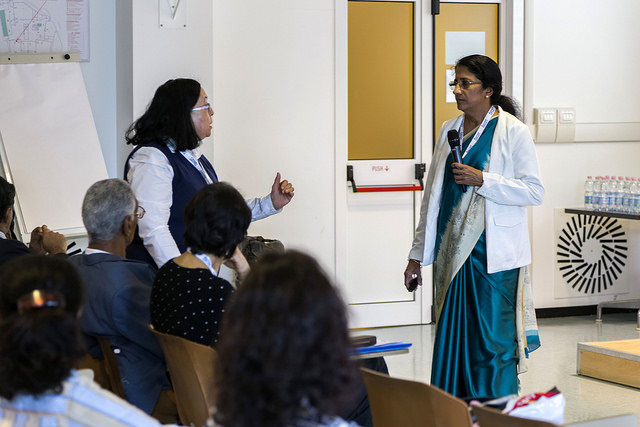 The grants have the potential not only to nurture careers that might move into policy, but to help scientists across disciplines. Developmental biologist and TWAS Fellow Eugenia del Pino Veintimilla received her first grant from the Academy in the 1998 for $2,000. She bought a fibre optic lamp for her microscope so that she could study frog embryos. She received a second TWAS grant years later that invested in even more advanced microscope technology.
The grants have the potential not only to nurture careers that might move into policy, but to help scientists across disciplines. Developmental biologist and TWAS Fellow Eugenia del Pino Veintimilla received her first grant from the Academy in the 1998 for $2,000. She bought a fibre optic lamp for her microscope so that she could study frog embryos. She received a second TWAS grant years later that invested in even more advanced microscope technology.
She said training of further biologists turned out to be an important impact of the grants. Her university, Pontifica Universidad Católica del Ecuador, now has at least 42 biology professors, many of them with PhDs. One of her students, Fabian Saenz, is already an accomplished early-career malaria researcher who recently received his own first TWAS grant and was an attendee at the conference.
“Through both grants I was able to attract very capable students and thus was able to advance the research projects that I have,” she said. “The TWAS grant helped me to be one of the pioneers in establishing biology research in Ecuador.”
And the grants continue to directly help early-career scientists overcome obstacles to their research.
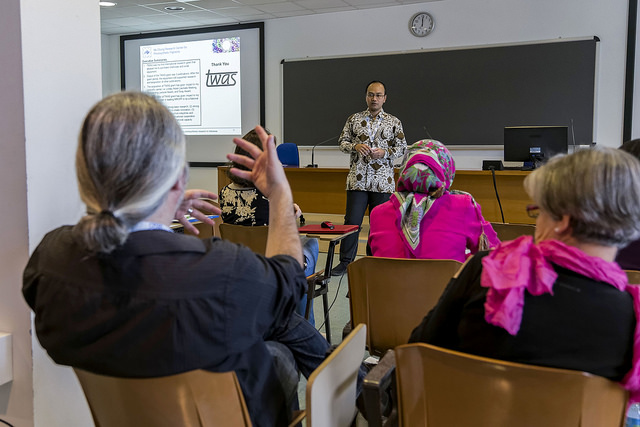 Tatas Brotosudarmo, a 35-year-old photochemist from Indonesia, said that in 2011 research was so difficult he couldn’t sleep. He had a lab space, but nothing in it. He joked that it used to trouble him coming to work every day in a clean workplace. “If it’s clean, that means it’s not a good lab.”
Tatas Brotosudarmo, a 35-year-old photochemist from Indonesia, said that in 2011 research was so difficult he couldn’t sleep. He had a lab space, but nothing in it. He joked that it used to trouble him coming to work every day in a clean workplace. “If it’s clean, that means it’s not a good lab.”
But, he added, a TWAS grant he received in 2012 “built my lab from scratch.” He received vital new equipment that allowed him to separate substances from ocean plants, purifying the pigments within so he could study their ability to absorb light. These pigments have potential usefulness in solar energy technology.
The grant, he said, led to three scientific publications and the opportunity to join other early career scientists at the high-level Lindau Nobel Laureate Meetings in Germany. He even had the opportunity to argue for a proposal to establish a national center of excellence in photosynthesis, Indonesia, before H. Mohammad Nasir, the Indonesian Minister of Research and Technology and Higher Education.
“I can be here, or I can stand in front of the minister, because of TWAS,” Brotosudarmo said at the TWAS conference. "If you do something good," he added, "everybody will follow you.”
Sean Treacy


